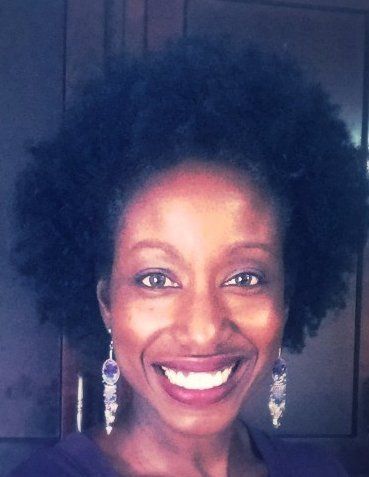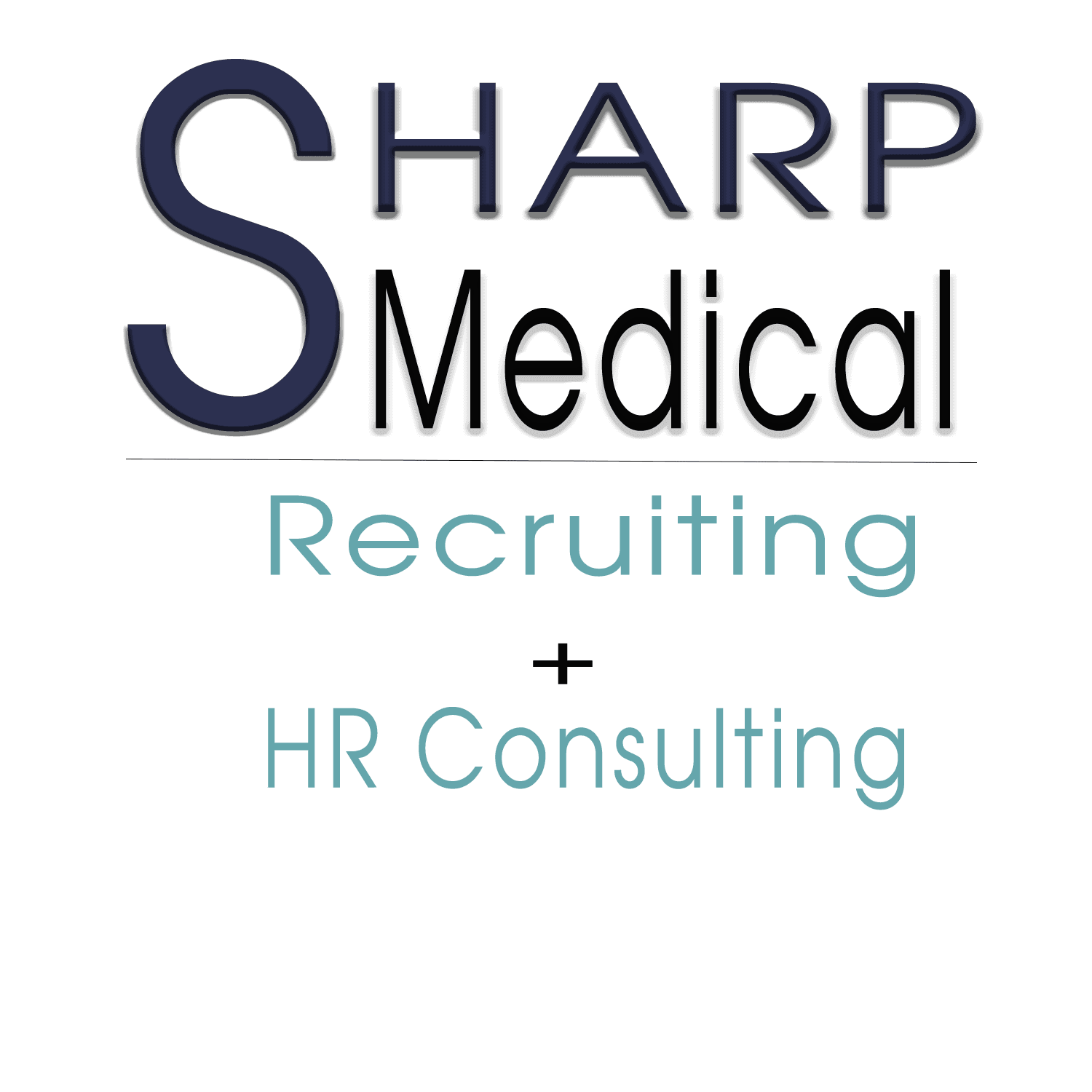Strategic and Competitive Intelligence Professionals: Creating an Environment that Fosters Employee Engagement
- By Rhian Sharp
- •
- 19 Jun, 2017
- •
Have you ever google searched the term employee engagement? There are over 286,000 results! Surely this topic is on the minds of many leaders. Managers and organizations spend countless hours of the day focusing on the idea of employee engagement. But what specifically is employee engagement? Why is it so important for organizations? How is it measured? And how can we improve it?

By Rhian Sharp
President and Chief Executive Officer
Sharp Medical Recruiting and HR Consulting
Have you ever google searched the term employee engagement? There are over 286,000 results! Surely this topic is on the minds of many leaders. Managers and organizations spend countless hours of the day focusing on the idea of employee engagement. But what specifically is employee engagement? Why is it so important for organizations? How is it measured? And how can we improve it?
What Is Employee Engagement?
What exactly is employee engagement? Let me first start by saying that employee engagement is NOT exclusively about tenure. It is very possible to have highly tenured employees with very low levels of engagement. Think about it… have you ever visited a business where the person providing the service had been employed for over 20 years, and was rude or slow while customers stood waiting irately in line? Surely as a customer, the chance of your return visit is minimal. And the reality is that the employee is not at all engaged.
David Macleod (co-founder of Engaged for Success) has a clear definition of engagement. Mr. Macleod states that employee engagement for managers “is about how we create the conditions in which employees offer more of their capability and potential.”
So,truly engaged employees have evolved to a level of what I refer to as performance actualization. They are performing to their maximum potential because they not only have the knowledge, skills and abilities to do their work but they are also working in an environment designed for their success. The environment includes not only the technology needed to perform the job, but also the organization’s policies, and culture.
So why do we want and need more engaged employees? I’ll answer that with one word:productivity. Research shows that employees who are more engaged, who feel more a part of the organization are more productive.
Aimee McKee at the Teleos Leadership Institute says: “Happy people are better workers. Those who are engaged with their jobs and colleagues work harder — and smarter.”
In fact,Gallup claims a 20% or better boost to productivity and profitability for companies with high employee engagement.
How to Measure Employee Engagement?
The truth is that work IS personal. Human beings tend to be happy and more engaged when they feel a part of the organization and its culture. Therefore, employee engagement tools tend to ask the following types of questions with the intention of gaining a better understanding of an organization’s employee’s level of engagement:
- I know what is expected of me at work
- At work, my opinions seem to count
- I have the materials and equipment I need to do my work right
- The mission or purpose of my company makes me feel my job is important
- At work, I have the opportunity to do what I do best every day
- My associates or fellow employees are committed to doing quality work
- In the last seven days, I have received recognition or praise for doing good work
- I have a best friend at work
- My supervisor, or someone at work, seems to care about me as a person
- In the last six months, someone at work has talked to me about my progress
- There is someone at work who encourages my development
- This last year, I have had opportunities at work to learn and grow
Creating an Environment To Achieve Employee Engagement(The Hierarchy Of Employee Engagement)
Working with various organizations for the last 20 years, I’ve observed that organizations with highly engaged employees tend to have a very well established hierarchy of engagement. What’s a hierarchy of engagement? Well, like Maslow’s theory of a hierarchy of needs, employees in an organization all need the following events to occur in a meaningful way:
Leaders of organizations can foster a culture that focuses on the events in the diagram above. It all starts with the talent acquisition (recruitment) process.Is the company’s brand one that people want to be a part of? Does the company offer a competitive or creative compensation and benefits plan designed to attract and retain the right people?Then, once employees join the organization how robust and effective is the training provided? Are performance reviews just a ‘let’s check the boxes exercise’ or is it an event that leads to a collaborate review of how the employee and company can best perform? Finally, does the organization have a genuine succession plan, one that provides the training and mentor ship needed to ‘grow’ its next generation of leaders?
Bring It All Together
Having a more engaged employee population is achievable. It involves not only understanding and measuring the level of engagement, but also an honest and introspective look at the environment and the culture needed to have highly engaged and productive employees.
Rhian Sharp is the founder and CEO of Sharp Medical Recruiting and Consulting. Rhian has been an HR Leader for almost 20 years and a Healthcare leader for over 16 years (working with industry leading companies like McKesson and Gentiva). In 2009, Rhian was named the first HR Director for the newly created state agency DBHDD. The agency consisted of the 7 behavioral health hospitals in the state of Georgia. Rhian earned a B.A. in Economics from Georgia State University and her MBA and Masters Certificate in Human Resources from Keller Graduate School of Management of DeVry University.

With the first month of the new year nearly over, how are you doing on the goals you set for 2018? If you’re like most people, you’re already slipping or you’ve thrown in the towel completely. Maybe you just need a better way to stay on top of your goals throughout the year.
On a recent episode of the podcast Call Your Girlfriend
, Sabrina Hersi Issa, CEO of Be Bold Media
and Venture Partner at Jump Canon
, shared her method for taking stock of goals, keeping tabs on her finances and simply making time for all of the things most of us know we need to do, but have trouble making time for. It’s called a Personal Inventory Day.
Hersi Issa blocks off a day on her calendar each month and uses that day to check her credit report, look at her savings goals, reviewing her personal budget, schedule doctor’s appointments, track progress on goals and send gratitude notes.
I loved Hersi Issa’s idea so much, I decided to reach out to a few professionals to find more tasks they would recommend for a personal inventory day.
Rhian Sharp, founder and CEO of Sharp Medical Recruiting and HR Consulting
“One thing I recommend everyone do is a monthly ‘ego surf.’ This involves simply Googling your name to see what information comes up. If you are looking for a job or that next promotion, it’s paramount that you do this at least once a month. You really don’t want incorrect or scandalous information surfacing about you online. If you find something that’s incorrect or inappropriate, do your best to get it cleared.”

Rhian Sharp is the President and CEO of Sharp Medical Recruiting and HR Consulting. Rhian has been an HR Executive for almost 20 years. Her company providers permanent employee placements and HR Consulting services for healthcare companies throughout the globe.
Can you tell our readers about your background?
I’m a simple country girl from humble beginnings. I was born on the Caribbean island of Trinidad and Tobago. In my culture, hard work and doing well in school is a must! So, I always did my best to excel in both work and academics. My father would talk with me about business topics for as long as I can remember. When most dads played with dolls with their little girls mine talked with my about macroeconomic issues 😊 I’m a running having run over 18 half marathons and a figure competitor. Most importantly, I’m a mother of two! My son Christian is 12 and my daughter Reagan is 10.
What inspired you to start your business?
I suppose I have an entrepreneurial spirit. However, the tipping point for me came when I realized that working for someone else as an employee did not provide me with either the creative license to do things the way I wanted to nor did it allow for the flexibility to spend time with my son and daughter. Working as an HR executive was comfortable, however, I had to beg for time off to go to kids plays or soccer matches. My time was not my own.
Where is your business based?
We are based in Atlanta GA, however, our clients are all over the US and outside of the US.
How did you start your business? What were the first steps you took?
Having been in HR and in the healthcare industry for almost 20 years I was very blessed to have relationships that I was able to leverage. My best client relationships have been with previous employers. My first step was to set a ‘launch date’. Once my date was set I made a list of possible clients and then I started sending messages to them asking if I could visit with them to learn about their ‘pain points’ and how I could help them.
Of course, I did the usual steps of registering my business and obtaining my business license.
What has been the most effective way of raising awareness for your business?
The most effective way of raising awareness of my business has been placing direct calls to prospective clients and strengthen my presence on LinkedIn. Nothing can take the place of a face to face meeting. My goal on my calls with prospective clients is to get at least 30 minutes of their time via a face to face meeting.
What have been your biggest challenges and how did you overcome them?
My biggest challenge has been time. As a business owner, you must generate your own sales, fulfill your own orders, collect your own revenue, handle all customer complaints and so on. You must really love what you do and love being independent. I’ve made mistakes and continue to make mistakes daily; however, I’ve learned to brush them off, pick myself up and get stuff done.
How do you stay focused?
I love running and lifting weights. I work out every day usually before I start work. It helps my mind focus on the day and I’m ready for anything once my workout is completed. My mind stays focused on work once my work out is completed.
How do you differentiate your business from the competition?
I’m available 24/7 for my clients. Seriously I am! If there is a need at midnight I will take the call. In addition, I’m always learning and reading about changes in the healthcare market. I find healthcare and the business of healthcare to be very fascinating and I enjoy sharing thoughts with my clients. I’m writing a book that’s scheduled for release this Spring. The book will be focused on ways healthcare companies can keep their best people. I’ll give free copies to my key clients.
What has been your most effective marketing strategy to grow your business?
Meeting for lunch and coffee. I know it sounds passé however my best business relationships have been established through a quick coffee meeting. I’ll get a lead from a friend or previous employer and I’ll set up a quick meeting. Even if the person does not want to do business with me at that time they usually will refer me to someone who could use my help.
What's your best piece of advice for aspiring and new entrepreneurs?
My best piece of advice is ‘Don’t Be Afraid’. If you’re working for someone and you’re earning a good amount of money and medical benefits, it’s hard to take the plunge. But do your research on the business you want to start, set your goals and take the plunge. All business starts with a bit of fear but doesn’t let the fear hold you back.
What's your favorite app, blog, and book? Why?
My favorite book is the Wide Sargasso Sea by Jean Rhys. I read it when I was about 14 years old. The images and contrasts of the book resonated with me. It’s the story of love and hate and the Caribbean and Europe and the juxtaposition of culture. In addition, it looks into the life and economy of the planter class in the West Indies. Very interesting stuff.
What's your favorite business tool or resource? Why?
Linked In has been a wonderful resource. In addition, I tend to read any business and or health industry magazine I can find.
Who is your business role model? Why?
Kathy Mazzarella (CEO Graybar). I admire the fact that she has been a successful leader in a VERY male dominated organization. The organization is financially successful and employee-owned.
What do you have planned for the next six months?
The theme for the next six months is GROWTH! My objective is to increase my revenues but 40%. It’s a big goal but it’s achievable. In addition, my book on employee engagement is scheduled for release in March.
How can our readers connect with you?
Please email me ( Rhian@sharpmedicalrecruiting.com ) or connect with me on Facebook (Sharp Medical Recruiting) or Linked in https://www.linkedin.com/in/rhian-sharp-mba-mhr-75924325/ or just give me a call 404-670-4786.

We hear it all the time: "hire the right people" and "build the right culture." Yes, these aphorisms may be tried and true, but possibly preached too often and practiced too regularly to give you any competitive edge to recruit top talent.
As a young bootstrapped entrepreneur , I was obsessed with hiring the right talent and building the right culture , I required all candidates to take the Meyers-Briggs personality test and submit a three-page essay after reading our 20-page culture document.
If the candidate was past the first three rounds, we would then require a nine-hour interview for the fourth round. This eccentric, Spartan-like interview process--which was primarily driven by intuition--was designed for a particular breed of sales professionals and eventually proved to be quite successful.
However, as Wasabi CEO David Friend recently told me, "Hiring in the startup world is quite different from hiring with a company that has over 1000 employees."
As I transitioned into an executive role with a staff of over 600 employees, I couldn't help but research ways in which we can leverage technology to recruit the best talent.
Here's what I found:
1. The importance of social media continues to grow.
Many companies are feeling the pressure to build up their online presence not only to attract customers but also to recruit talent.
According to a recent study, over 91 percent of employers are using social media to hire today. This trend will continue to grow. Even for my company, which is a B2B SaaS solution, we continue to build brand awareness through Facebook, LinkedIn, and Twitter.
"In an economy with unemployment near at 4.2 percent, CEOs have to take a very active position on finding top talent," says Rhian Sharp, president and CEO of Sharp Medical Recruiting. "If you are not a CEO with a strong presence online and don't use social media--LinkedIn, for example--you will not win this war on talent."
Stay on top of the competition by maintaining a strong presence online. Too busy? It's not difficult to train an intern for assistance or use products such as Hootsuite or SocialPilot to streamline your social media posts.
2. Companies are looking outside the usual social media channels.
Facebook launched a Facebook Jobs feature earlier this year to help small businesses recruit the best talent. The feature designed to poach business from LinkedIn has not yet picked up much steam.
Christoph Seitz, CEO of Rinkens applauds this feature, saying:
"Facebook has 1.86 billion users, while competitor LinkedIn has only 433 million members. Most Facebook profiles are filled with important demographic information like age, past job titles, employer information, educational background, and even interests. This is key for employers as they target their job ads to reach candidates with the proper credentials."
The early bird catches the worm. I know this from experience: When Angellist, a social networking site for startups, was in its infancy, my company was able to gain a sizable competitive advantage by using it since not many other employers were. More recently, I was able to recruit a talented intern through another new platform, GenM, which just launched last year.
Stay ahead.
3. Predictive analytics is coming into play.
Predictive analytics is coming into play for all industries and recruiting is no exception. Trust me, my company builds predictive analytics software for movie exhibitors.
David Joubran, CEO of Acumen Solutions, says, "Using predictive analytics not only helps businesses avoid bad hires. It also ensures that the rock-star talent you do acquire continue to grow and make an impact at your company."
There's been a sharp rise of predictive analytics, according to a recent study by Dresner Advisory Services. If your organization isn't staying ahead in big data, you'll slowly fall behind.
4. Companies are supplementing traditional hiring practices with data.
When considering your approach to recruiting, there is no need to think that an intuitive approach versus a data-driven approach is mutually exclusive.
At my company, we always say, "Man meets machine." With the power of one's intuition supplemented by data, one can make much more powerful decisions. This can give you an overwhelming advantage in the war for talent.
Rob Hecker, vice president of human resources at Colonial Life, says big data can help you identify top employees quickly. "By combining traditional HR data--employee demographics, performance data, sales data and customer feedback--employers can gain a clearer picture about individual employee performance and the factors that influence this," he says.
Often, we mistake technology with the replacement of tried-and-true traditions. This cannot be further from the truth. Technology can enhance and help your decisions, as opposed to eliminating or marginalizing them. Re-educating and training your staff on your technology can offset that tension.
Times are changing. Ignore the latest trends at your own peril.
